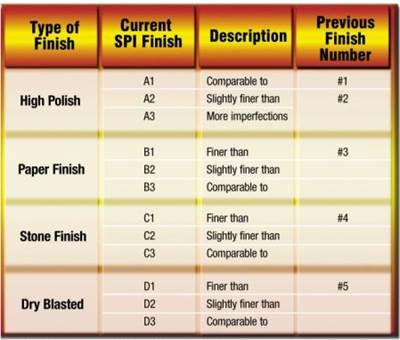How to Increase Polishing Efficiencies
A concurrent approach to polishing increases the man-and-machine efficiency while streamlining workflow to help attain ever-decreasing leadtimes.
Share
Wilson Tool & Die is an ISO 9001:2000-certified company that has been in business more than 37 years. It started out as a precision grinding shop and has since diversified into several areas—such as designing and building die cast dies, trim dies, component parts, plastic injection molds, stamping dies (progressive and single hit), fixtures and gages while retaining its precision grinding capabilities. The company’s latest accomplishment was acquiring and implementing an NC polishing machine. This machine is the first of its kind and Wilson Tool & Die was the first shop in North America to have it. They acquired this machine in November of 2005. The decision to buy it was influenced by:
- Increased competition from the global theatre;
- Shorter delivery dates being mandated by customers; and,
- Sensitivity to OSHA concerns with respect to repetitive motion injuries.
If you are going to be in the moldmaking business, plastic or die cast, you must
be able to polish. Wilson Tool & Die recognized this as an opportunity to address three major concerns with one solution.
Selection Guide
Wilson Tool & Die knew that there is no way to completely replace a skilled polisher with a machine; however, the NC polishing machine they were looking for had to offer ample features to complement their existing polishing capabilities. For example, the NC polishing machine they purchased:
- Came with an eight-station toolholder and is capable of performing automatic tool changes
- Has six axes of movement that allows a wide variety of work to be tackled
- Can run four axes simultaneously in stroke or spindle rotation mode
- The range of motion is 500 mm in the X axis, 390 mm in the Y axis, 250 mm in the Z axis and 110° of rotation in the B axis
- The table can be programmed to index incrementally or rotate continuously
- The maximum workpiece size that the machine can handle is 500 mm x 500 mm x 250 mm with a maximum weight of 300 kg
- The footprint for this machine is 2,300 mm x 2,300 mm x 2,500 mm
- The machine weight is 1,000 kg.
The programming is simple and user friendly. It includes five basic programming routines with a “teach-learn” con-troller that offers a short learning curve, which leads to quicker productivity. These programs can be chained together and run in combination depending on the part requirements. These programs can be stored and recalled for future use.
The machine’s clean, simple design allows the user the flexibility to set the machine in an office environment.
Polishing and the Polisher
In many cases, an NC polishing machine will not completely replace a polisher. For example, if you have thin, deep ribs in your workpiece, you may not be able to fashion a stone or other media into the holder to give you satisfactory results. This is not to say that many other areas on the same workpiece could not be done with the NC polishing machine. It just may not be able to do the workpiece completely. The polisher is still required to apply his/her knowledge to program the machine with the right media and technique to attain the desired results. This is no different than having your CNC operators programming their own machines and applying their knowledge to a specific job.
There are some jobs that will be completely automated and can be done 100 percent in the machine. For example, some companies are polishing silicon wafers, medical components and aerospace parts without operator intervention other than programming and set-up. The type of work you do will dictate how much polishing automation can be achieved.
Polishers will still be needed to do some of the more intricate details. Keep in mind that an NC polishing machine is a robot that mimics the movement of a manual polisher. Its capabilities will, in part, be determined by how good you become in programming the motion you want it to repeat. What the polishing machine will do is work concurrently with the polisher(s). This will decrease the amount of time that the polishers will be exposed to the vibrations and frequencies inherent with the normal tools of their trade.
Wilson’s lead polishing man was trained on how to program the machine in less than one week. This machine is no different than any other piece of equip-ment: the more you use it, the better you get. Once he gets a job running, he continues doing his normal polishing duties from the bench.
Operator Double-Duty
Most shop owners and managers fully understand the positive impact of getting double-duty from their operators. In most cases, operators will run multiple CNC machines to maximize machine run time efficiency. In this case, the polisher continues his task of applying his skills and expertise where it is needed while the machine takes care of some of the less demanding polishing areas that tend to be mundane, but are nonetheless necessary.
This concurrent approach to polishing increases the man-and-machine efficiency while streamlining the workflow to help attain the ever-decreasing leadtimes. Wilson is using its NC polishing machine the same way you use a conventional CNC mill with a tool changer. They schedule longer running programs toward the end of a shift and let it run overnight.
Productivity Improvement
Depending on the complexity of the workpiece to be polished, you can expect to see a productivity improvement of two to five times, as Wilson Tool & Die has. There have even been companies with large polishing departments that were able to realize the same production with two polishers and one machine as compared to five polishers without this type of polishing machine.
Globalization has increased the level competition for tool and die shops in the U.S. and made it imperative that we look at every step in our processes for opportunities to decrease labor while increasing efficiencies.
Related Content
Mold Design Review: The Complete Checklist
Gerardo (Jerry) Miranda III, former global tooling manager for Oakley sunglasses, reshares his complete mold design checklist, an essential part of the product time and cost-to-market process.
Read MoreSurface Finish: Understanding Mold Surface Lingo
The correlation between the units of measure used to define mold surfaces is a commonly raised question. This article will lay these units of measure side by side in a conversion format so that companies can confidently understand with what they are dealing.
Read MoreHow to Eliminate Chatter
Here are techniques commonly used to combat chatter and guidelines to establish a foundation for optimizing the moldmaking process.
Read MoreConsiderations for Mold Base Material Selection
Choosing the right material can greatly affect the profitability and cost of your application.
Read MoreRead Next
Ensuring Mold Steel Polishability
When working on a project that requires high-quality texturing or surface finish, using an electro-slag quality material may be the best option for mold steel.
Read More.png;maxWidth=970;quality=90)
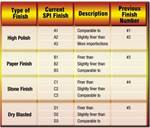
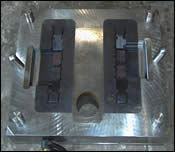

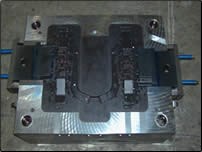
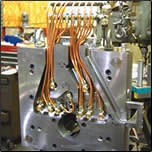










.jpg;maxWidth=300;quality=90)
.png;maxWidth=300;quality=90)

_300x250 4.png;maxWidth=300;quality=90)





